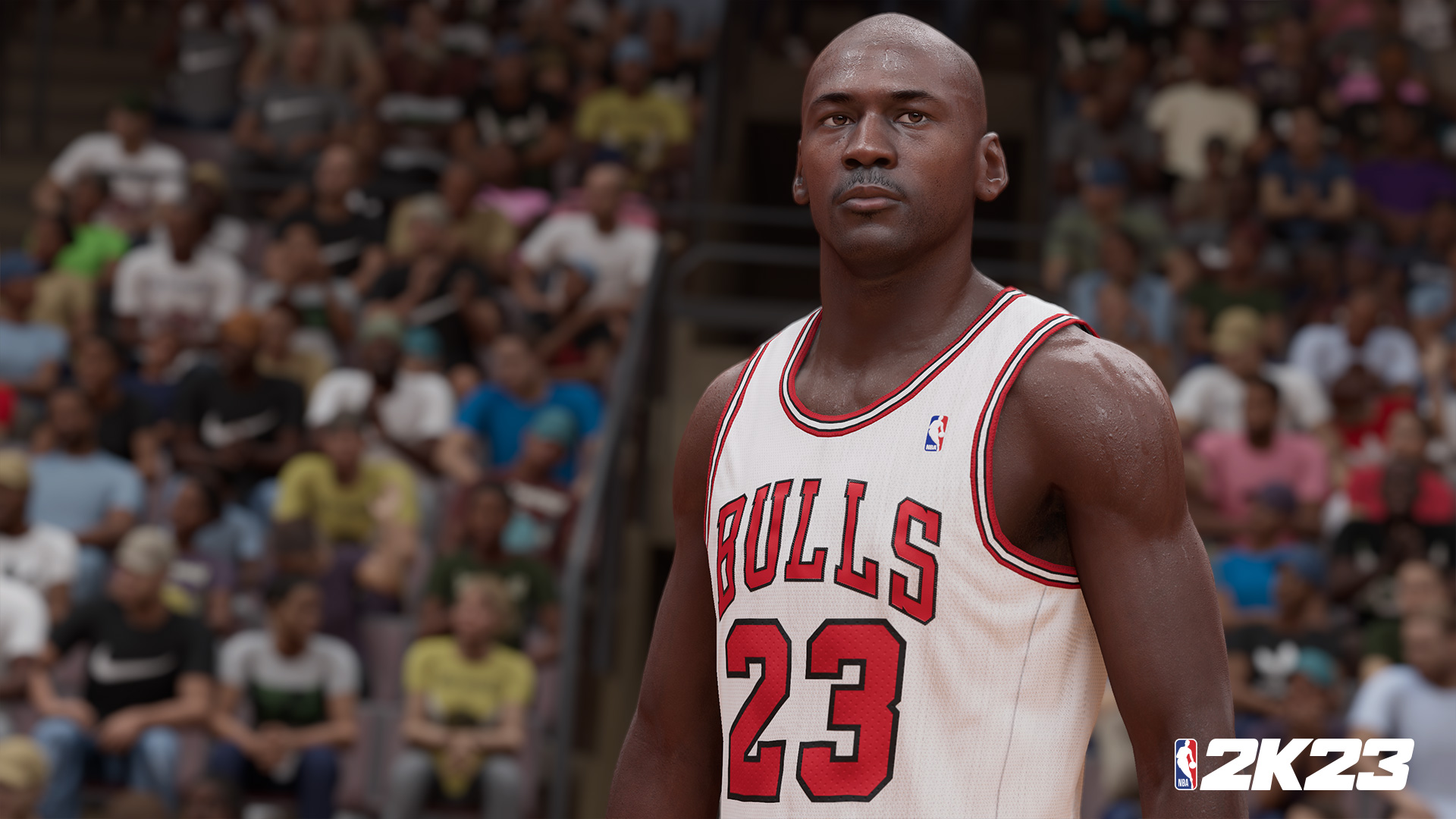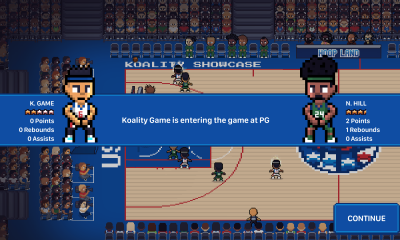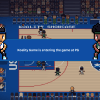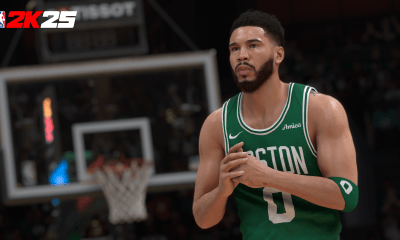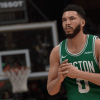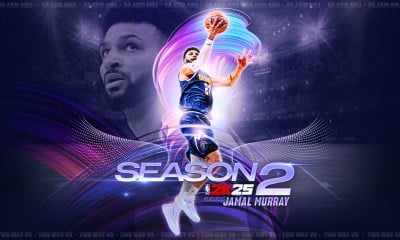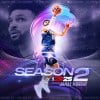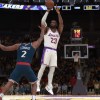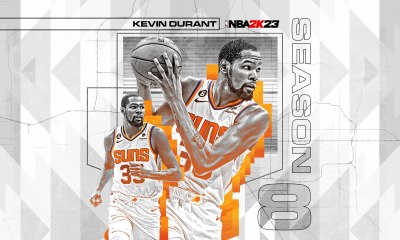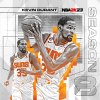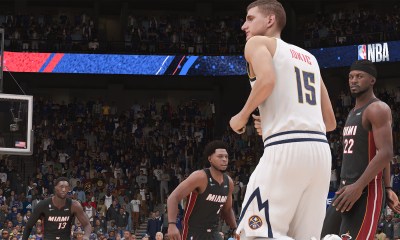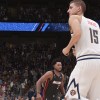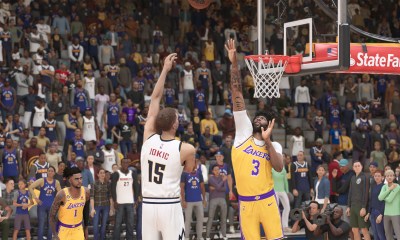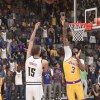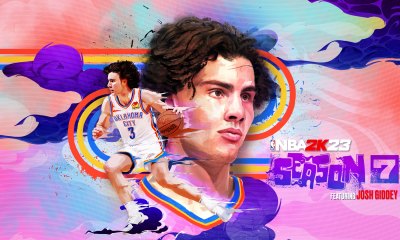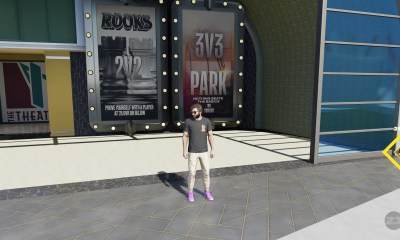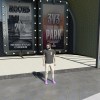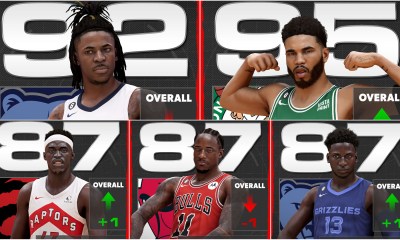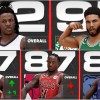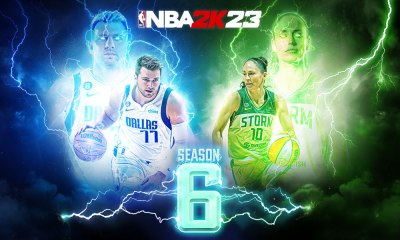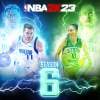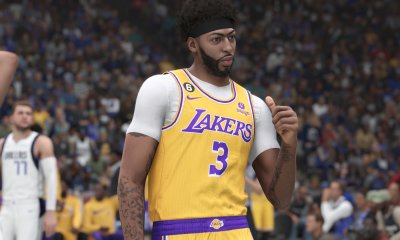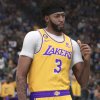NBA 2K23
NBA 2K23 Review - They Didn't Break It One Month Later
#2KDay has come and gone. We’re now about a month into NBA 2K23 and the game has stayed essentially the same since launch. In saying that, I’m going to get this out of the way now and voice something that was not always the case one month after launch these past couple years. NBA 2K23 is good. Very good. I have said this before at launch, only to see updates come out that end up changing the game as a whole from being a fantastic experience to an “OP” pile of junk. This is why we’re writing this NBA 2K23 review “one month later” update specifically for this game.
In general, it seems 2K has learned from these mistakes and is trying to keep the “major” adjustments to a minimum unless there are glaring issues that need fixing. I think there is a slight issue defensively that could use a minor adjustment. There are also, once again, some stability issues that have affected a fair share of users, and they have also affected my experience with the game. Besides that, NBA 2K23 as a whole is an overall fun experience that I’m enjoying. That said, there has been a common theme that continues to be an issue, so in this review I will discuss how 2K has improved but has also created a situation that could potentially change how the genre works going forward.
(I want to note that because NBA 2K is such a massive game, my focus centers around gameplay and MyCareer first and foremost because those things are what I care about most. We’ll continue to deep dive other aspects of the game all year, but as always, our reviews are about the individual experience.)
NBA 2K23 Review
What I Like
NBA 2K23 is the closest we have gotten to something that plays like a true basketball sim. Things are a little slower and more complicated to do this year, and I didn’t know how I’d feel about the changes that were made and talked about before launch. I can say with confidence that this is the first time that 2K’s long claimed “stick skills rule supreme” rings true on the whole. Add in the fact that you have to play with IQ, and you’ve got a fantastic game of basketball on the court. Let’s break down the things that have worked well so far.
Shooting
From the jump, shooting is more rewarding as you mostly have to “green” or shoot a perfect/excellent release in order for your shot to go in. I’ve seen a few “whites” or slightly early/late release shots go in, but that’s been quite rare. People that are having a hard time locking in their shot timing and release points have complained about this, but most players are quite happy with the change. Not getting bailed out for mistiming your shot benefits everyone as it forces players to find a shot that works for them, learn it, and stick with it. Mike Wang already voiced his position on not wanting to touch shooting at all on Twitter.
The changes to shooting also tie in with the new Jump Shot Creator system that has been implemented this year, which has introduced “Shot Attributes” when creating a shot in the Animations menu. Release Height, Release Speed, Defensive Immunity, and Timing Impact are the areas that are graded on a scale from A+ to F. The higher you manage to get your grade for each area, the more lethal you can consider your shot to be. Of course, that’s if you can lock in your shot and get your timing down. I managed to create a shot combination with A- grades across the board, and I was quickly able to nail the timing.
Dribbling
The next area of gameplay that underwent big changes and has contributed to balance on both sides of the ball is the introduction of Adrenaline Boosts. Working in tandem with stamina, Adrenaline Boosts seem to have been brought in specifically to tone down iso spamming dribble moves and combos. While iso basketball and “dribble gods” are a style of play that drive teammates nuts every year, this year the NBA 2K23 team looks to have brought in more of a desire for team play and IQ than in previous years, which has created more balance in gameplay overall.
Any time you execute a “hard go” or “explosive sprint launch,” you’ll consume one boost bar. Once all three bars are consumed, your player’s speed and acceleration will be noticeably and significantly decreased for the rest of the possession. This now brings in a more calculated approach to using dribble moves instead of the old zigzag and side to side speed boosting cheese of old.
That said, I have seen more players starting to figure out how to spam dribble moves without using boosts, as well as players who have apparently figured out how to spam dribble moves without having to use boosts combined with added stamina from Gym Rat. I have not seen this too much so far, but I wouldn’t be surprised if it starts to get more into the meta in the weeks ahead.
Dunking/Attacking The Rim
Players who prefer to attack the rim and dunk on anyone in their path can rejoice. Dunking in NBA 2K23 is arguably the most effective way to score, especially when executed by a slashing build. While this revamped area of the offensive game has gotten more love this year, I do have a little bit of a problem with how ineffective interior defense can be at times — we’ll touch on that in a bit. Unlike previous 2Ks where you could expect your driving dunk rating in tandem with the required badges for finishing to lead you fearlessly into the paint, NBA 2K23 sees a change in control schemes to give players a new way to abuse the rim. Adjustments to the pro stick and how it functions allows players to have an expanded arsenal of moves with what the 2K team refers to as double throws and switchbacks.
A double throw is performed by flicking the pro stick in a direction, letting it go back to center, and then quickly moving the pro stick back in the same direction. A switchback is executed by flicking the pro stick in a direction, letting it center, and then quickly moving the pro stick in the opposite direction. With this, especially when attacking the rim, players can now (try to) pull of Posterizing dunks if and when they want. In NBA 2K22 you could attack the rim with what you’d think is a simple dunk attempt to then have the dunk meter pop up and catch you off guard.
The dunk meter returns in NBA 2K23 but will now only pop up if you manage to hit the right double throw or switchback command to make it happen. Double throw and switchback gestures with the pro stick also extend to the saucier part of attacking the rim, allowing players to hit nasty Ginobili-like euros and cradle layups. Figuring out and mastering these new combos and having a player capable of snaking around the rim will also see you pull off layups that could have Filayyyy making clips off your highlights.
Defense
The NBA 2K development team has been working away at improving the defensive side of the ball for the last few iterations of the game. In the past couple games, at launch it felt like there was generally a good balance, but then a patch and nerf of certain areas ended up making defense an afterthought. You can quickly think back to NBA 2K22 where steals happened quite often if you dribbled too much, but then after a nerf steals were almost a thing of the past. NBA 2K23 has fixed this, and this year’s game has the most balanced and rewarding defensive play the series has seen to date.
Speaking on steals, no you can’t just spam the steal button and expect to get a rip every time. A reoccurring theme this year is that IQ comes into play when playing on-ball defense and trying for a steal. On-ball defense is so, so satisfying that it’s almost scary. You can still get blown by or crossed up but that mostly falls on your IQ and ability to stay in front of the ball handler.This is not to say the ball handler does not generally have the advantage, but the same is true in the real NBA as well.
New this year is the defensive shading mechanic, a new indicator that works for and is visible by both the ball handler and on-ball defender. Three bars on this new indicator represent three different zones: straight up, shade left, and shade right. The zone the defender is in is shown in red. If the ball handler attempts to attack a red lane, they’ll get cut off, lose their dribble, or fumble the ball. This system works quite well, and while steals aren’t easy to come by, you will definitely get a rip or loose ball if the ball handler dribbles too much. Time it right and you’ll look like Gary Payton in his prime.
One other annoying frustrating in NBA 2K22 was player awareness when it came to loose balls or plays near the sidelines. Players would routinely step out of bounds or make other bonehead decisions when trying to pick up or fight for a 50/50 ball. That has been remedied this year and some of the animations I’ve already seen are quite impressive. Players recognize their position and body placement when trying to save a ball along the sidelines and will make an obvious effort to make the right decision on the ball. Diving ball saves actually work and happen this year and look like they’re actually based on the player’s momentum and body direction. You’ll save a loose ball sometimes or make the attempt to throw it back in bounds and throw it back out of bounds anyways because your player is either late to make a play or isn’t aligned properly for the save. In a Park game with some friends, I managed to save a loose ball and get it to one of my teammates who kicked it over for an open three. The animations were clean and very believable. It was a joy to see.
Defensive/Transition AI
Those who have played NBA 2K for some time already know, but for those new to the series, defensive AI has been quite awful at times. Transition defense has been absolutely atrocious most times. You could easily pick apart an AI defense just off fast breaks because they wouldn’t make the correct reads to stop you. We can all breathe a collective sigh of relief now because NBA 2K23 has (mostly) solved this problem. Fast breaks are much harder to come by (more on this in a second), as players on defense will slide down and pick up threats that would usually amount to quick buckets in transition. This slows the game down to a much more realistic level while also cleaning up an area of gameplay that has been a problem for years. It also adds to a much more satisfying experience overall in games.
However, some of this “fix” does appear to just be a speed “cheat” of sorts. Specifically as it relates to games against the AI, I think bigs are able to catch up or corral guards far too often, and this eats up some opportunities on the break that should lead to easier points. The rotations and awareness overall are better, but we still need to find that speed differential sweet spot so fast guards can get out on the break and still take advantage when they have the advantage on slower bigs.
New Gen Badge System Revamp
NBA 2K23‘s badge system is the best and most concise system we’ve had since badges were introduced into the series. Some may not agree here, but having to be strategic about the badges you use for your build and equipping what fits your playstyle best was one of the smartest moves the 2K development team has made for MyCareer. It’s another way that balance has been created in the game. I also really like the tier system that has been implemented as it doesn’t allow you to go crazy and max out badges like in the past.
To explain the badge system this year, things work on a tiered scale. There are 16 badges per attribute category: eight in Tier 1, four in Tier 2, and four in Tier 3. Tier 1 badges are the least powerful for your player but also cost the least amount of badge points. Costs go up as you get into Tier 2 and 3 and acquire more impactful badges. You’ll need to equip a certain number of badges in the lower tiers before you can equip badges in the highest tier. This new system is a welcomed change to the badge system of old that had players stacking badges with no variance at all. You’re now forced to make decisions based on your own specific playstyle and build, unlike years past where players would just stack the best badges.
You’ll now find more unique badge loadouts as well as a necessity to make use of the loadout system. This is yet another way in which the 2K development is trying to bring balance to the game this year.
MyPlayer Builder
The MyPlayer Builder has transformed over the last few years, but this year’s builder has arguably been the most complicated one to date. That in itself is a great thing to me. I spent almost a whole day initially trying to flesh out my build that I felt would be capable of being effective on both sides of the ball. Although we’re seeing a lot of builds with the same name(s), the attributes of the players vary and that leads to different types of players. Different types of players and builds means more variety and more variance, which was a focal point for the 2K development team this year. It’s really great to be able to jump into a Rec or Park game and have to try to figure out how your opponents will play as a unit rather than always matching up against teams where you’re up against two ridiculously small guards that dribble all over the place and can hit all sorts of three-point shots.
The Jordan Challenge
For those who had the chance to play the Jordan Challenge in NBA 2K11, we were treated to iconic moments from the GOAT’s NBA career, and this mode was a refreshing take on basketball history for the genre. The 2K team has brought the mode back this year, and they’ve really outdone themselves this time. Combined with the improvements in gameplay, you’re going to be met with a serious challenge for each of the 15 moments you get to play.
What really sets the mode apart this time around, and will really set a precedent for any type of “flashback” modes in the sports gaming genre going forward, is the attention to detail in pretty much every area possible. From the video filter overlay in older games (which can be turned off), to broadcast elements in-game representing each era, right down to coaches and announcers including legendary Chicago Bulls PA Announcer Ray Clay, the Jordan Challenge in NBA 2K23 is an absolute treat. Fans old and new will really appreciate what the 2K team has done with the mode, and new fans who didn’t have the opportunity to see His Airness in action will get a nice history lesson on why many feel that Michael Jordan is truly the greatest of all time.
MyNBA Eras
It’s no secret that the NBA 2K series has the deepest, most comprehensive franchise mode in console sports gaming. It’s been that way for many years now and there’s no chance that changes anytime soon. With that in mind, I’m going with the assumption that the 2K development team felt the need (again) to really separate themselves from the rest of the pack by introducing MyNBA Eras this year. This next-gen experience sees the introduction of three of the NBA’s greatest periods in time: Magic vs. Bird Era (the 1980s), The Jordan Era (the 1990s), and The Kobe Era (the 2000s). Setting up a MyNBA save to play in the current NBA landscape is known as the Modern Era.
Whatever Era you choose to start in, you can guarantee that you’re getting the authentic NBA experience of the time from the arenas to the presentation packages and overlays. Uniforms, coaches, and rosters are all there as accurately as possible as well, except for the players/coaches who aren’t licensed. Add in the plethora of options that MyNBA offers, and you have one of the most comprehensive franchise modes to date in sports gaming. I can’t wait to dive in further once OS folks get their rosters ready to fill in all the gaps 2K could not due to licensing issues.
What I Don’t Like
As I’ve now mentioned a few times, NBA 2K23 is without question the best NBA 2K title to come out to date. There are very few major things to pick at about this year’s game. In saying that, the major issues are glaring problems that have some players re-evaluating their time and investment into the game and series. Let’s take a look at what doesn’t fly for NBA 2K23.
Stability Issues
One thing I don’t think we’ll ever be able to escape in the NBA 2K series involves the stability issues that plague the game every year. We’d usually encounter a multitude of problems at launch that would get smoothed out by about the second month of the game’s release. This year we’ve seen a multitude of issues, but the one that seems to persist right now involves not being able to continue or initiate a quest in MyCareer. This ends up halting your progress altogether and you have to try and do other smaller side quests and then go back to the quest you were trying to complete.
Another issue that has affected some users, me included, has been a camera issue in MyCareer in The City that forces your screen/camera to scroll “across the city” and then places you under the map. If the scrolling doesn’t happen, you could also just end up getting a black screen. After getting off to a very quick start in the game, I ended up being knocked out of playing NBA 2K23 altogether because of the black screen/scrolling issue. I just had the problem resolved by 2K Support earlier this week.
Some Xbox Series X users are encountering system lockups or system crashes. Again, as I mentioned above, these types of issues — as well as many others — always plague 2K and this year is no different. The 2K development team needs to figure out how to iron these things out so that we aren’t experiencing these types of hiccups so frequently. We’re three years into the next-gen cycle now, so you’d think there would be some headway in terms of the tech used to make sure these types of bugs could be identified.
Interior Defense/Rebounding
Interior defense and rebounding are not things I would put under the “major” issue category. That said, they’re still problematic. I think that interior defense could be tuned ever so slightly so that the rim running and contested layups don’t happen so much. With the changes made to builds, the badge system, and the necessity to play with IQ, this has led to a more “open” game, but the 2K dev team already mentioned that slashers and players who like to attack the basket would be getting some love this year. They’ve definitely gotten the love they were assured to get, but it’s kind of come at the expense of interior defenders and the realism that the game has run towards in other areas this year. If the development team can figure out a way to get a few more contests on drives to the basket, that would make the game that much more realistic than it already is.
On the rebounding front, it’s the same song and dance we’ve been going through for years. While this applies more to games against the AI, it’s just so incredibly common to see any large human like Capela, Jokic, Gobert, etc. rip down 20 boards without fail. On top of that, there are still too many instances of offensive rebounds and offensive rebounds where one guy with bad positioning beats out three other players from the other team. There is no reason someone like Clint Capela should be one of the best players in 2K every year, but almost without fail that ends up being the case.
Microtransactions/VC
Here we are once again griping about virtual currency (VC). I griped about this last year in NBA 2K22, and it’s gotten worse in NBA 2K23. You’ve got one group of people who don’t understand the complaints, but it would be fair to say that those people with that sentiment either don’t frequent The City or are more casual players who would rather jump into MyNBA Eras or quick games. The main group of people who are dissatisfied this year and complaining about VC are the ones who have to spend their hard-earned money just to keep up.
In order to be competitive and be able to hoop on a level playing field, you’re going to have to fork out big money to use on your MyPlayer. It’s no secret that the cost of improving your MyPlayer has increased year over year, but NBA 2K23‘s costs are wild. First of all, if you can afford the $99.99 US/$119.99 CAD version of the game that gives you the bonus 100K VC, you’re off to a decent start — to level your player up to a 72-74 overall, depending on your build and where you spread out your attributes. Attribute costs are dependent on the build that you make, and key attributes cost substantially more to raise compared to less important ones.
If you don’t want to spend real money to purchase VC from the in-game store, which costs from $1.99 US/$2.99 CAD for 5,000 VC to $99.99 US/$133.49 CAD for 450K VC, then you can grind out MyCareer and other game modes to earn VC. Unfortunately, that’s a massive waste of time because you’ll earn anywhere from 300 to 1,100 VC per game. MyCareer quests see you earn 300 VC on average and finishing some bigger quests will net you 15K VC. I’m sure you can already see where this is going.
If you’re disciplined and trying to grind to level up your build, it would take you half of NBA 2K23‘s life cycle to level up your one build. In order to actually be viable and have a player who will compete in the Rec, Pro-Am and other various PvP arenas, you’ll have to cave and spend real money. To put things into perspective about what it could cost you to max out a build to a 90 overall, I’ll work with YouTuber and 2K community member AllCity LiveTV’s video (see above) regarding how expensive it is to play NBA 2K23.
Most of us who have played NBA 2K since the introduction of VC have known as the years passed that the MyCareer and MyPlayer format have moved closer and closer to a pay-to-win structure, and NBA 2K23 is easily the most egregious and blatant display of this. AllCity explains that he created a 3-Level Shot Creator archetype at the point guard position with a height of 6-foot-1 and wingspan of 6-foot-10. This information is important because your build archetype determines what attributes are of utmost importance, which you choose when you make your build. The height also matters because your height will lock or unlock certain things in terms of shot animations, dribble styles, and other important intangibles that your player will need to perform on the court. Of course, in order to get access to these things, you’ll have to spend VC.
Your new builds always start as a 60 overall, and after you complete the Rebirth quest with your initial build, any subsequent build you make after that will start with a number of badge points given to you off rip, as well as the ability to level up your player to a 90 overall right away. Quickly jumping to another issue here, players usually have anywhere from two to six builds in a given year, and a couple of those builds are leveled up so that they can be used. Going back to AllCity’s breakdown, this Rebirth point guard build would cost him 473,428 VC to max out to level 90 overall. He breaks down the VC total by category, explaining that the crucial attributes cost way more to increase than some others. He compares the amount of VC it costs to increase one attribute and its amount in real world dollars that you’d have to spend.
When you really compare, it can shock you to realize how much you’re investing into the game. You’re spending $99.99 USD (plus tax) to purchase the base game itself for example. The bonus 100K VC that you get wouldn’t be enough to max out your build, so if you cave and decide to buy VC, you’ll spend at least $49.99 USD for the 200K VC bundle. Based on AllCity’s math, that doesn’t really make sense because you’ll need another 173,428 VC to max out, so you’re put into a position where you have to consider spending the big bucks and getting the 450K VC bundle, which is another $99.99 USD. That’ll allow you to max out your build for sure now, but your overall rating isn’t enough to play NBA 2K23 in the Rec, Pro-Am or Park. You also have to ensure that your player has the right animations that work for your playstyle. Equipping new animations that your player qualifies for will cost you more VC, as you’ll have to purchase animations in order to equip them.
So, now that you’ve maxed out your attributes and you’ve got your animations the way you want them, you’re set to play, right? You’ll be able to keep up with other players for sure, right? Not exactly. After spending all that money and in-game VC, the one area you’ll spend countless amounts of VC on will be Skill Boosts and Gatorade Turbo Boosts. Yes, you can go without having any boosts, but that unfortunately puts you at a serious disadvantage against other players. NBA 2K is almost designed so that you have to use boosts to keep up. So, circling back to AllCity’s breakdown, you see that Gatorade Turbo Boosts will cost you 10,500 VC for a 10-pack of each Turbo Boost type (Super Shake, Thirst Quencher, and Gatorade Zero with Protein). These boosts affect your energy/turbo meter, which allows you to get an extra turbo meter bar, recover your turbo meter bar faster, and have your energy decrease slower over a game. Playing a MyCareer game or any City game uses one boost. You can get a discount on Gatorade Boosts by doing the Hand-Eye workout in the gym. For Skill Boosts, a 10-pack will run you 1,500 VC per, so depending on your build and strengths you’ll buy a specific amount for all Skill Boosts. All in all, you’ll spend roughly 8,400 VC to buy boosts.
If everything broken down here doesn’t scream pay to win, I don’t know what does. I (mostly) understand the revenue structure of corporate business, where shareholders want to make money and see profit margins increase year over year, but when do we as consumers catch a break? Where does the necessity to squeeze out every last dollar end? It most likely won’t be the case, but the VC issue in NBA 2K23 could force some hard decisions by consumers that could change the 2K landscape this year and for the future of the franchise. Only time will tell, but until the 2K community takes a hard stance against VC and forces a change, we’ll be singing this same song for NBA 2K24 and the iterations after it.
Bottom Line
NBA 2K23 is the best iteration of the 2K series we’ve had to date. Gameplay is great and despite some issues with rim running/rebounding/interior defense, there’s a true sense of balance on both sides of the ball, which is something we haven’t seen in years. The skill gap that the 2K team claims to bring rings true this year, and you really need to buckle down and learn the adjustments you need to make in order to be successful. The game offers something for everyone with MyNBA Eras, the Jordan Challenge, and a MyCareer that should have players grinding out for more than a month or two. Almost everything shines bright for NBA 2K23. We’ve just got to figure out how to take the bad taste out of the game with the microtransactions and pay-to-play elements that are tarnishing such a great piece of work this year.
I can truly say that if you’re considering getting NBA 2K23 to play a great game of basketball, do so without hesitation. Just be wary of the fact that you’ll have to shell out some extra money if you want to get into and keep up with the rest of the community when it comes to running in the Park, Rec, or Pro-Am.


